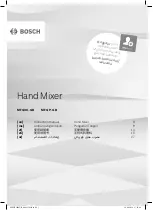
Glossary
54/ 58
V 1.2
zirkon User Manual
Locator
Remote functional unit at a tape recorder that allows an automated
finding of certain tape positions. With the locator you define the
tape positions (locator points or locator positions) at which for
certain tracks the tape recorder switches from play to record and
vice versa while playing.
Low pass filter
Frequencies below a defined limiting frequency can pass this filter
type, those above are attenuated with a certain edge steepness.
MADI
Multi-channel Audio Interface; digital interface for combining audio
signals of 56 channels. This format serves for the transfer between
digital mixing consoles and DASH recorders.
Main sum- channel
This channel type serves for generating the main out signal. The
input of the main sum channel is connected fix with the respective
summing bus.
The signal processing has practically the same range like an input
channel incl. insert point or direct out. The output signal of the
main sums is supplied at the direct out which is positioned at the
end of the signal processing chain.
From a main sum channel it is not possible to access summing
buses (ASSIGN bus assignment).
Master
Operating element that rules over other elements of the same type
by definition and assignment.
Merge mode
Mode in which two data streams or tracks of MIDI data are merged
to one track or one signal.
Meter
= Display instrument
MIDI
Musical Instrument Digital Interface
Manufacturer spanning digital interface which is seen as the
standard for the realtime data transfer between different musical
instruments.
Module
With regard to the zirkon it signifies the combination of display
instrument, LED bar and operating element(s) for setting and
monitoring parameters.
Monitor
Loudspeaker box used by musicians or presenters on stage or in
the studio for monitoring themselves.
Monitor channel
This channel type is used for integrating optimally a connected
multichannel machine with the console. For this purpose the
monitor channel includes two signal paths:
The summed signal of the track summing bus is supplied to the
multitrack machine via direct output of the channel and the matrix
(track send).
The output signal of the machine (track return) is routed via matrix
to the input of the monitor channel and allows the editing of the
monitor mix. With the console-internal buses, this signal is routed
to groups or sums.
Notch- Filter
Generates a steep-edged notch in the frequency response of the
amplitude and thus a high Q factor with a frequency controlled
freely. This filter type is well suited for suppressing disturbing
noises with a clearly defined frequency.
On air
= Radio programme is being broadcasted
Overload
System is strained at the input with too large a level
→
non-linear
distortion
Panning
Also stereo tremolo





































